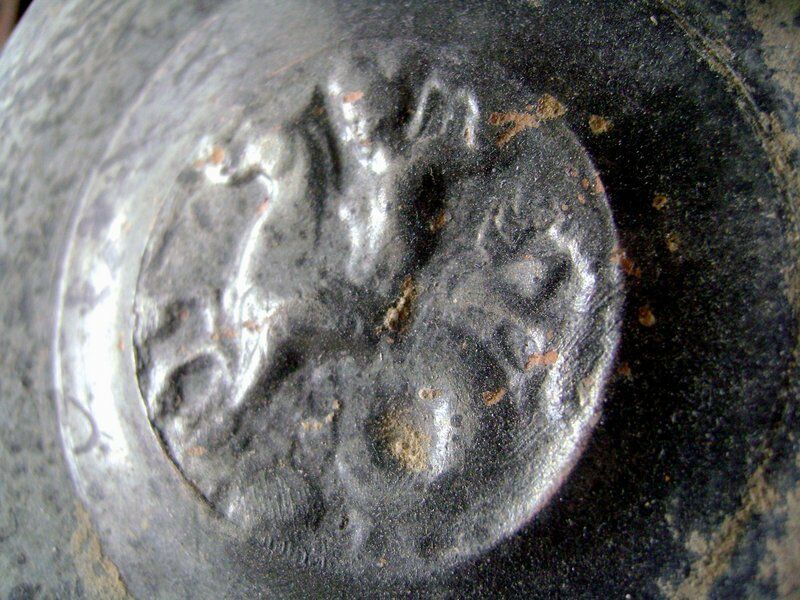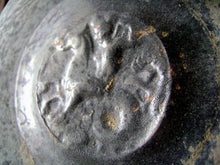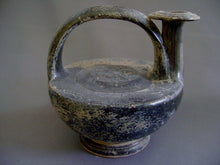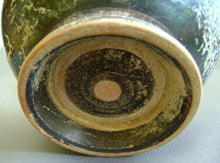Ancient Calene Guttus Ceramic from Southern Italy
Regular price
$1,795.00
Sale
This ancient guttus ceramic has a low rounded body with a flat, closed top decorated in tondo with a nymph riding on a hippocamp (hippocampi or hippocampus). The foot is in two degrees separated by a moulded ridge and buff ceramic. A straight vertical spout is set on the shoulder with a high arching handle. This calene vase is covered with black gloss with some surface growth. The name "Calene ware" is used for black gloss vases with relief decoration, produced in many places in Southern Italy. Dates to the mid third century B.C. and measures 4.35 inches in height.
HIPPOCAMPE and HIPPOCAMPUS (Hippokampê and Hippokampos), the mythical sea-horse, which, according to the description of Pausanias (ii. 1), was a horse, but the part of its body down from the breast was that of a sea monster or fish. The horse appears even in the Homeric poems as the symbol of Poseidon, whose chariot was drawn over the surface of the sea by swift horses. The later poets and artists conceived and represented the horses of Poseidon and other marine divinities as a combination of a horse and a fish. (Hom. Il. xlii. 24, 29; Eurip. Androm. 1012; Virg. Georg. iv. 389; Philostr. Imag . i. 8; Stat. Theb. ii. 45.) Source: Dictionary of Greek and Roman Biography and Mythology.
For reference see: Hayes, J. W., Greek and Italian Black-Gloss Wares and Related Wares in the Royal Ontario Museum: A Catalogue, Toronto, Royal Ontario Museum, 1984, 53-56 ("Calenian" Gutti).
Also see: Fig. 149 and pp. 285-286 in: M.-O. Jentel. Les Gutti et les Askoi à Reliefs Étrusques et Apuliens. Leiden 1976.




